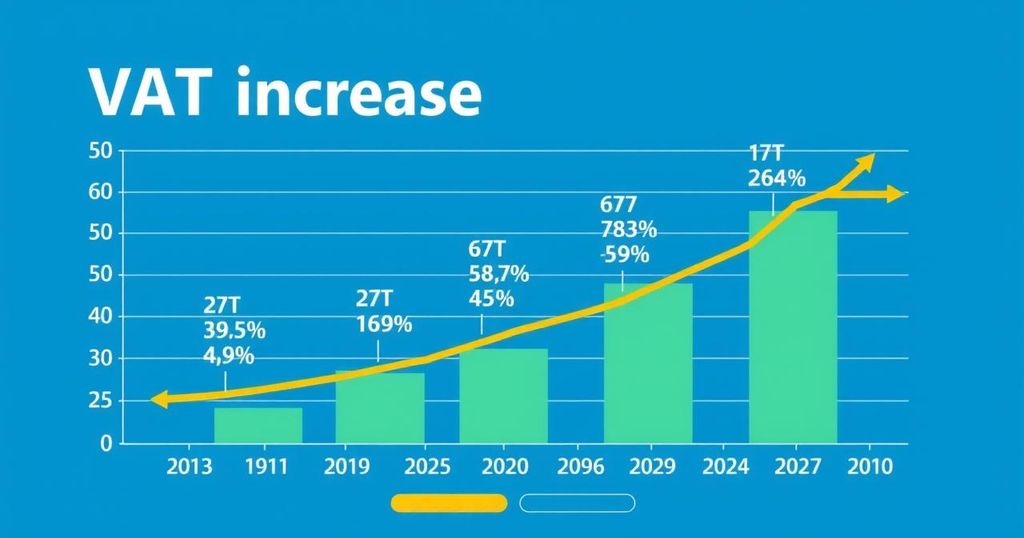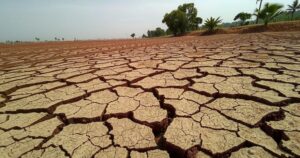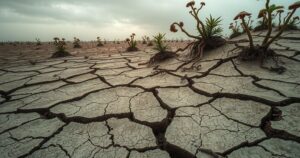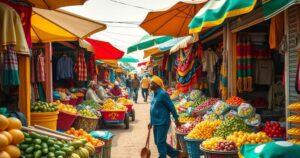Phased Increase of VAT in South Africa: Economic Implications and Challenges

South Africa will incrementally increase the VAT from 15% to 16% by April 2026, aiming to close a fiscal deficit and maintain essential services. The increase will occur in two phases, generating an estimated R13.5 billion. Opposition parties criticize the hike, arguing it will burden consumers. Additionally, personal income tax brackets will remain unchanged, potentially increasing tax burdens amid inflation. The government emphasizes the importance of broadening zero-rated items to alleviate the impact on low-income households.
The South African government will incrementally raise the value-added tax (VAT) from 15% to 16% by April 2026 to address a growing fiscal deficit and to support essential public services. This phase-in strategy, outlined by Finance Minister Enoch Godongwana during the 2025 Budget Speech, will see the VAT rate rise to 15.5% on May 1, 2025, followed by an increase to 16% on April 1, 2026. This adjustment is projected to generate an additional R13.5 billion ($736 million) in the 2025/26 financial year, enabling continued spending on healthcare, education, and security despite criticism from opposition groups regarding its potential impact on consumers.
The decision to increase VAT was reached after extensive debates within the coalition government, with opposition from the Democratic Alliance (DA) and key members of the African National Congress (ANC) regarding an earlier proposal to elevate the rate by two percentage points. To mitigate adverse economic impacts and avert immediate backlash, the government opted for a gradual increase rather than a sudden hike. DA leader John Steenhuisen has suggested exploring alternative solutions, such as divesting port concessions and eliminating wasteful spending, instead of imposing higher taxes amid rising living costs.
To provide relief for low-income households, the government will broaden the list of zero-rated VAT items effective May 1, 2025, adding products such as tinned vegetables, dairy liquid blends, and various meats, including poultry, goat, sheep, and pork. Additionally, the government has decided against adjusting personal income tax brackets for inflation, which could lead to “bracket creep”—where workers receiving inflation-linked salary increases are pushed into higher tax brackets, thereby increasing their tax liabilities, anticipated to yield an extra R18 billion ($981 million) in revenue.
Excise duties on alcohol and tobacco will also see increases of 6.75% and 4.75%, respectively, exceeding inflation rates. However, fuel levies will remain unchanged to prevent further financial strain on taxpayers. The 2025 budget, originally due in February, was postponed to March 12, underscoring the difficulties of coalition governance and internal disagreements over fiscal policies.
Given South Africa’s sluggish economic performance, the Treasury has scaled back its growth forecast for 2025 to 1.9%, following a mere 0.6% growth in 2024 attributable to a contraction in the transport and agricultural sectors. The government aims to stabilize gross loan debt at 76.2% of GDP in 2025/26 and reduce the consolidated budget deficit from the current 5% to 3.5% by 2027/28, yet managing debt servicing costs remains a significant hurdle, with R389.6 billion allocated to debt repayments this year—outpacing funding for health, policing, and basic education combined.
In summary, the VAT increase aligns with a comprehensive strategy to enhance revenue while ensuring the government continues to provide vital services. Nonetheless, this initiative occurs amid increasing economic hardship for many South African citizens. The gradual implementation and expansion of zero-rated items aim to alleviate some burden, yet the government faces the crucial task of balancing fiscal responsibility against public acceptance in a challenging economic landscape.
In conclusion, South Africa’s phased VAT increase from 15% to 16% is a strategic response to address the fiscal deficit while continuing to fund essential public services. With anticipated additional revenue of R13.5 billion, the government plans to ease the impact on low-income households through an expanded list of zero-rated items. However, the decision to avoid inflation adjustments in personal income tax brackets, combined with rising excise duties and economic pressures, creates challenges in balancing fiscal recovery with public sentiment. The coalition government must navigate these complexities to achieve both economic stability and public trust.
Original Source: thecondia.com








